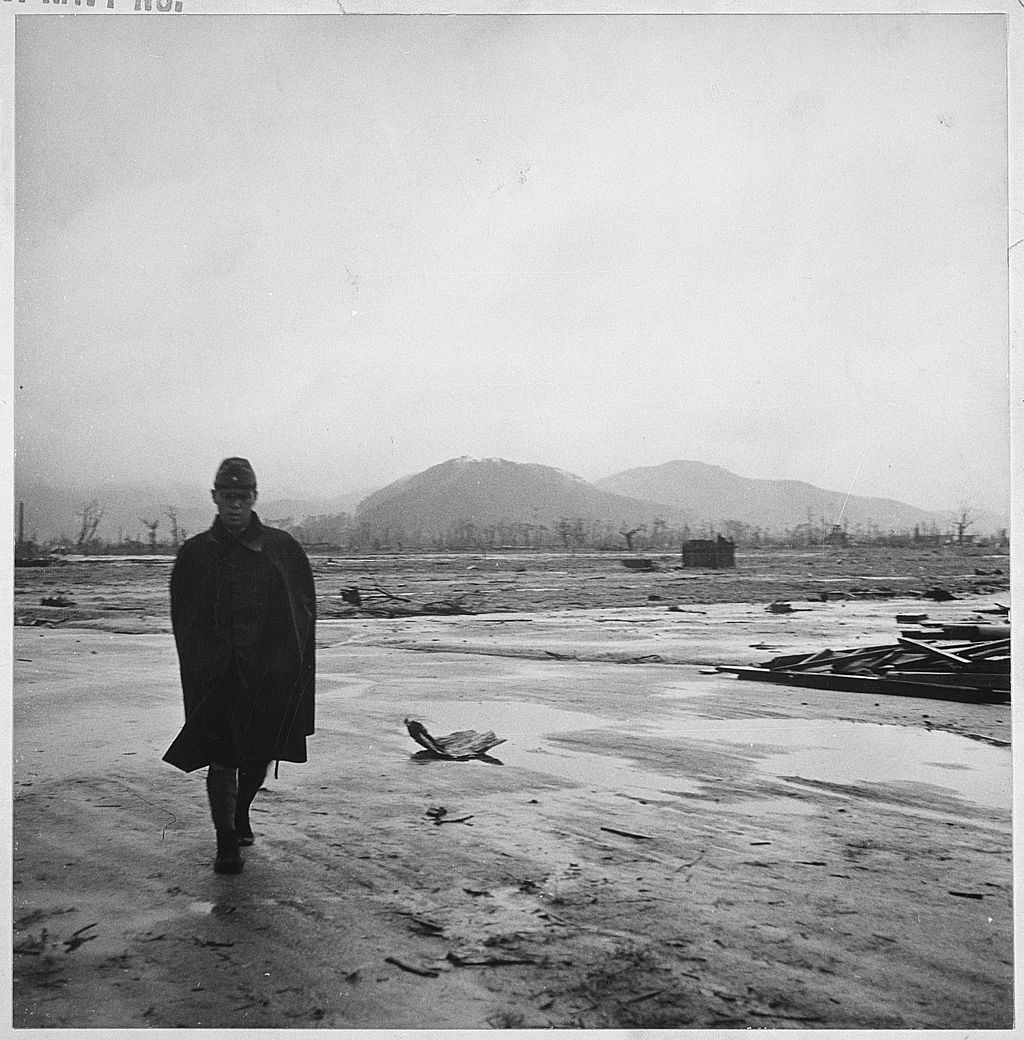To this day, the atomic bombs dropped on the cities of Hiroshima and Nagasaki remain the only two nuclear weapons used by mankind in anger. The use of the bombs, named ‘Little Boy’ and ‘Fat Man’ remains a topic of controversy, with some believing the US did not have the justification to use such devastating weapons, while others believe they saved more lives than they took.
Ethics aside, just two bombs, dropped by two aircraft, killed between 130,000 to 230,000 people. This act was the terrifying result of man manipulating the fundamental forces of nature, and established not only the power of the atom, but also the United States.
Investigation into the possibilities of atomic weapons began all the way back in the 1930s, after European physicists discovered the splitting of the Uranium atom when it was bombarded with neutrons, naming the process fission. Soon after, many of the top physicists in Europe and the US understood the potential of nuclear fission for a bomb, but not enough research had been done to work out how it could work in practise.
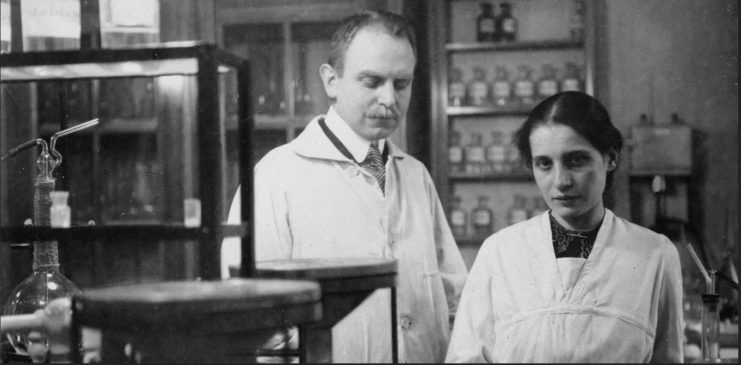
The start of the WWII made many concerned about the Nazis managing to make a working nuclear weapon, prompting Albert Einstein to sign a warning letter to U.S. President Franklin D. Roosevelt. Ironically, the Nazi persecution of people from certain races, religions, and sexualities meant many minds capable of assisting their quest for nuclear weapons had been killed or already fled the region.
While the US would eventually become the first country to complete a working atomic bomb, the British were in fact the first to start a nuclear weapons programme, with the Tube Alloys project. The British led the way in nuclear research for a considerable amount of time, before fighting a war so close to home caused funding to dry up. The programme was absorbed into the US Manhattan Project when it began in 1942.
The Manhattan Project was one of the biggest projects of the war, employing 130,000 people and costing $23 billion in todays money. This enormous programme produced two types of atomic bombs, the gun-type and implosion-type.
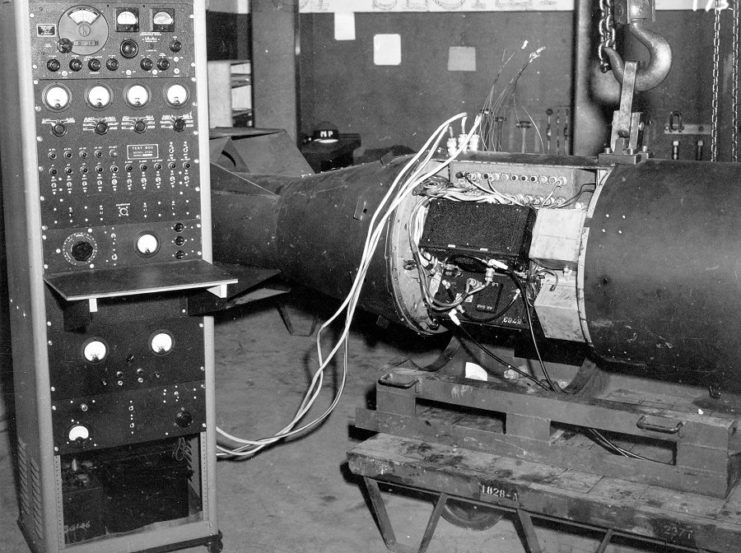
The gun-type fires two fissile projectiles at each other down a barrel, reaching a supercritical state once they reach each other. This design is simpler, but as the speed at which the projectile travels is relatively slow, the materials can interact and start the fission reaction early, blowing itself apart in a small explosion known as a ‘fizzle’, and preventing a full fission reaction. Also, due to the barrel, the bomb itself is very long.
The implosion-type compresses a fissile material into a supercritical state, which is achieved by surrounding a sphere of plutonium with a uniform sphere of explosives. This design is more complex, but is more stable and promises a more efficient reaction and therefore a guaranteed explosive yield.
The first test of an atomic bomb was performed on July 16, 1945 with the Trinity test. The bombed was of the implosion-type, and produced an explosion equivalent to 22,000 tons of TNT. Less than one month later, an atomic weapon would be used against an enemy.
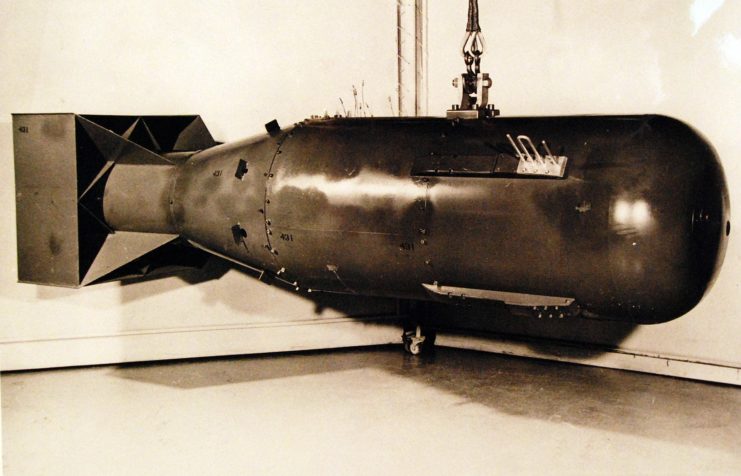
In early 1945, the 509th Composite Group, along with 15 Silverplate B-29s were transferred to Tinian island, in the Mariana islands. The 509th was commanded by Colonel Paul W. Tibbets, and had been trained in the deployment of nuclear weapons (although the actual purpose of their mission remained a secret during their training). The Silverplate B-29 was a modified B-29 capable of carrying and dropping an atomic bomb, along with an extra weaponeer station.
The secrecy of the group and their aircraft was so high, that there are multiple accounts of the crews pointing their guns at airbase commanders who attempted to enter their aircraft.
Two bombs were prepared for the 509th, a gun-type named Little Boy, and an implosion-type named Fat Man. The implosion method had been tested during the Trinity test, but the gun-type had not, due to it using the only available supply of Uranium 235.
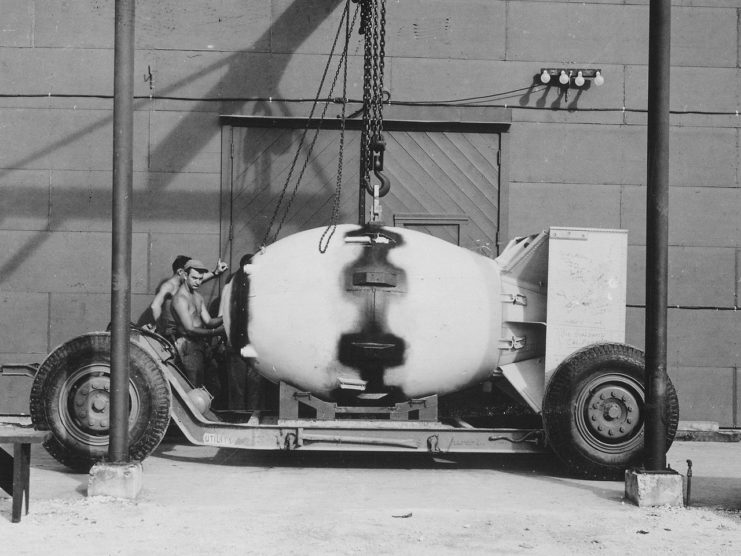
Five target cities were selected; Kokura, Hiroshima, Yokohama, Niigata and Nagasaki. They were chosen for various reasons, including large amounts of military infrastructure, political importance, their large size to properly display the bomb’s power, and that they hadn’t been damaged by previous bombing, again to showcase the bomb’s power.
The US warned Japanese cities with leaflets about impending attacks over the previous months, but none had received warning that a new, more devastating weapon was to be used.
The B-29 Enola Gay took off from Tinian on 6th of August 1945, piloted by Tibbets himself and carrying the Little Boy bomb.
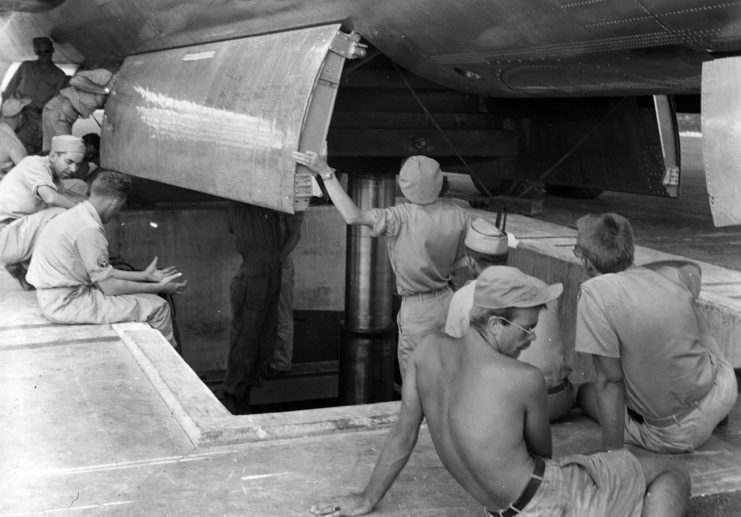
Enola Gay would link up with two other aircraft over Iwo Jima; a B-29 named The Great Artiste, carrying instruments to analyse the bomb, as well as another B-29 which would photograph the explosion. A fourth B-29, Straight Flush, would fly ahead to monitor the weather.
Their primary target was Hiroshima, with Nagasaki and Kokura as secondary targets.
Only Tibbets, Ferebee and the weaponeer knew about the bomb they were dropping, while the other 9 crew were simply provided black goggles, and told to expect a blinding light.
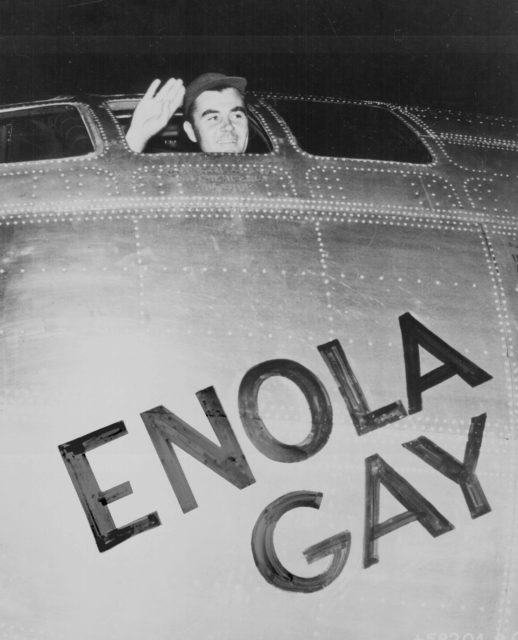
Around an hour before Enola Gay, Straight Flush flew over Hiroshima, causing the air raid sirens to begin. Straight Flush contacted Enola Gay: “Cloud cover less than 3/10th at all altitudes. Advice: bomb primary.” This moment sealed Hiroshima’s fate. At 31,000 ft, Tibbets handed control of the aircraft to his bombardier, Major Thomas Ferebee, and began the bombing run.
Little Boy was released from Enola Gay at 8:15 am, with the aiming point being the Aioi Bridge. The bomb fell for 44 seconds, before detonating 240 m off target at 1,900 ft. In an instant, the bomb released an explosion equivalent to 16,000 tons of TNT, and for a miniscule moment was one of the hottest places in the Solar System.
The blast ripped through the city, obliterating everything within a 1 mile radius, and killing between 70,000 – 80,000 people, including 20,000 Japanese troops. A further 70,000 were injured. The city’s buildings, constructed mostly from wood, were devastated.
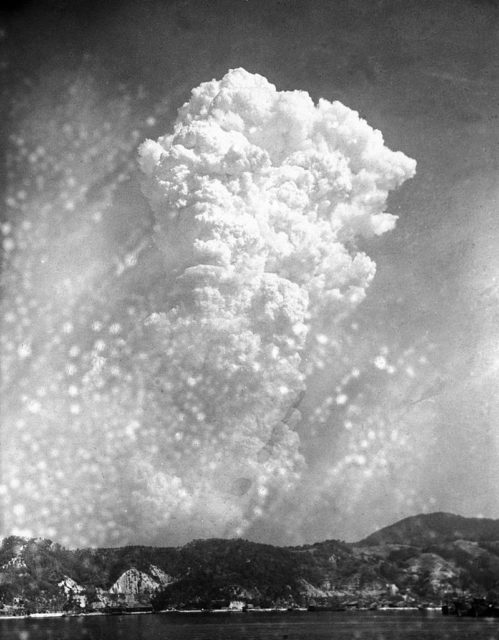
The Japanese estimated that the bomb destroyed 69% of the buildings in Hiroshima. Around 90% of doctors and nurses were killed, severely diminishing relief efforts. Amazingly, citizen Eizō Nomura was just 170 m away from the blast, managing to survive in the cellar of a reinforced building.
Shockingly, despite the total destruction of the city, the bomb itself performed poorly, with an incredibly inefficient reaction of just 1.7% of its fissile material.
The Japanese government wouldn’t entirely understand the nature of the situation in Hiroshima until the US’s announcement by President Truman the next day. The Allies pressured the Japanese to surrender, with the alternative being that “they may expect a rain of ruin from the air, the like of which has never been seen on this earth.”, as quoted from Truman.
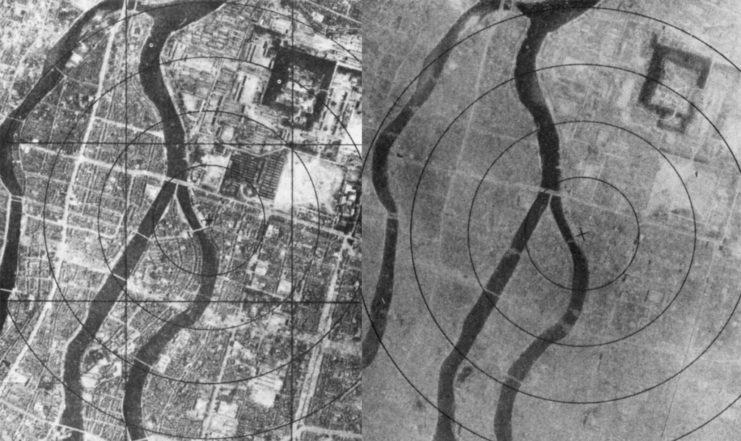
The Japanese estimated that US could only produce another one or two bombs, and that they would accept the losses those would cause in order to continue the fight.
Just three days later, the Soviets invaded Japanese held Manchuria.
With the Japanese unbroken, the US decided to use another bomb; this time it would be the job of the Fat Man to bring Japan to its knees. With the dropping of the second atomic bomb, and the Soviet’s invasion, Japan finally admitted defeat.
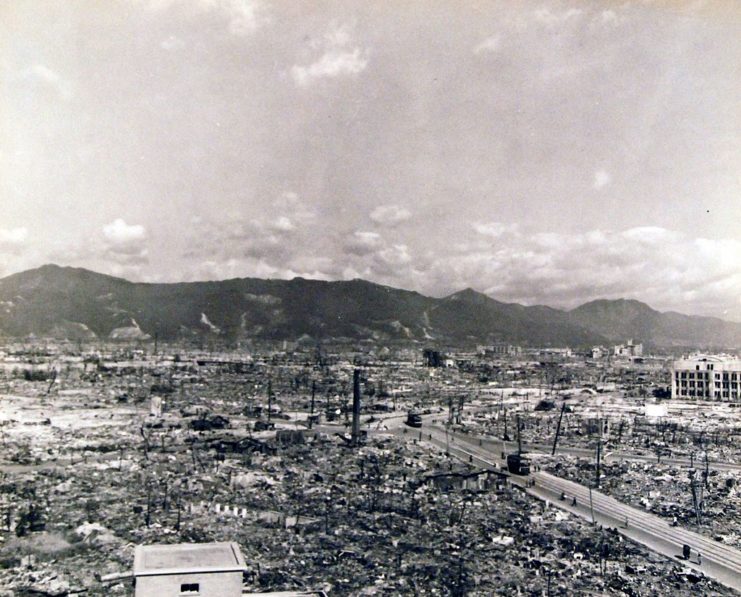
From the decision to drop the first bomb, the debate has remained about the ethical issues surrounding the atom bomb attacks. Without the dropping of the bombs, it is often viewed that the US would have invaded Japan, fighting a tough and costly battle against potentially millions of loyal citizens and soldiers, using any weapons possible to fend off the invaders. Alternatively, some see the dropping of the bombs as a brutal display of force against civilians that claimed tens of thousands of innocent lives, and constitutes to a war crime.
This debate will likely continue on for centuries.
Another Article From Us: Rare Pearl Harbor, USS Arizona Relic For Auction by Small Missoula Company
Humans often aren’t aware that they are changing the world while they are doing it, but the crew of Enola Gay certainly did just that with a single bomb.
